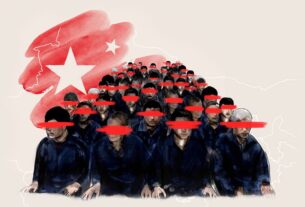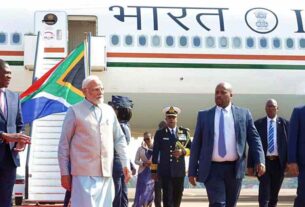Pakistani authorities found and seized a drone in Chaghi district of southwestern province of Balochistan on July 19, 2019. (Balochistan levies)
Sat 27 July 2019:
A foreign drone was seized from Pakistan’s Chaghi district bordering Iran and Afghanistan, confirmed an official while talking to Arab News on Friday, fueling speculation among security analysts and drone experts that it most likely belongs to Iran.
“A drone was found by Balochistan Levies at Tuzgi Wadh area of Chaghi district,” said the region’s deputy commissioner, Fateh Khan KHajjak, while declining to comment further. A Balochistan government official said on Tuesday that the area where the drone was found was just a few miles away from Reko Diq gold and copper mine. He rejected reports that the drone had landed due to technical issues, adding that it had been handed over to Frontier Corps Balochistan.
“The drone grounded with the help of parachute and was in a functional condition. Had the levies not switched it off on time it would have flown away,” the official told Arab News on condition of anonymity since he was not authorized to talk to the media. He further divulged that the area where drone was found was just 30-minute drive from Helmand in Afghanistan. Chaghi is also known for Chaghi-I, or five simultaneous underground nuclear tests conducted by Pakistan on 28 May 1998.
Asked who did it belong to, the official responded: “It’s hard to say as the drone has no monogram or country flag,” though he added that an investigation had been launched to identify the country that owned the unmanned aerial vehicle and operated it Pakistani borderlands.
Meanwhile, drone experts and security analysts claimed it seemed to be a MoHajjer drone that belonged to Iran. “The drone appears to be a MoHajjer, although the tail appears to differ slightly from images released by the Iranian press,” Erik Lin-Greenberg, a drone expert and assistant professor at the American University’s School of International Service in Washington, DC, told Arab News via email.
He pointed out it was difficult to determine why the drone had landed in Pakistan, adding: “States typically want to keep their military technology from falling into the hands of rivals who could reverse engineer systems and glean valuable technical and operational information. The drone may have malfunctioned and made an unanticipated landing.”
Greenberg said it was also difficult to assess what Iran’s intentions were in this case, or even if the drone was intended to be operated inside Pakistan. “The Iranian drone that Pakistan shot down in 2017, however, was reported to be monitoring the border region for illegal activity,” he added. Khalid Muhammad, an Islamabad-based security analyst, said: “It’s the second intrusion of an Iranian drone into Pakistan’s airspace, and this has happened within a span of a week or 10 days.” “Whether we wait for confirmation or not, this will emerge as an Iranian drone,” he added confidently.
“This is the first time a drone has been recovered in functional condition. The last Iranian drone was shot down in Balochistan,” he continued, noting: “We must believe that Iran is monitoring something within Pakistan. We haven’t had this frequency of drones coming across our border with Iran in the past, so we must believe there is surveillance or intelligence gathering in process.”
Experts also believe such incursions could strain relations between the two countries. This is not the first time an Iranian drone has penetrated into Pakistan’s airspace in Balochistan, Greenberg said. “In 2017, for instance, the [Pakistan Air Force] reportedly shot down an Iranian drone in the same region. That particular incident did not escalate to conflict, and this incident also seems unlikely to escalate. My research suggests that attacks on drones fall at a less escalatory threshold than attacks on inhabited assets, making it easier for countries – in this case, Iran – to avoid retaliating when their drones are shot down. In other words, losing a machine is far different than losing a friendly pilot,” he said.
Greenberg said that drones offered states a means of carrying out military operations with lower risk of losing pilots, often have lower operating costs than manned aircraft, and can linger over targets of interest for hours at a time. “As a result, drones are ideally suited for ‘dull, dangerous, and dirty’ missions that states might not otherwise launch using manned platforms. This is why we’re seeing a significant uptick in the use of drones in conflict zones and contested areas around the world,” he pointed out. He also added that Iran’s military had long operated drones, and media reports suggest they have been expanding their fleet in recent years. “Iran not only operates its own indigenously produced drones, but has also exported them to other state and non-state actors,” said Greenberg.
Arab News
Think your friends would be interested? Share this story!





